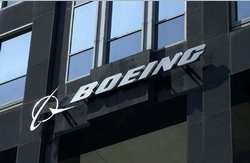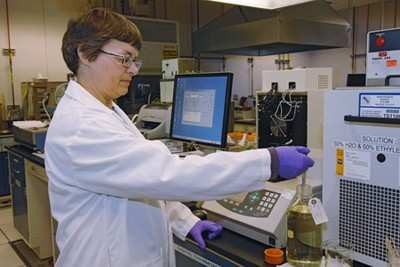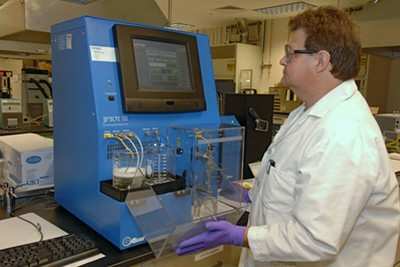Fri, Sep 28, 2007
Demonstration in 2008 targets the viability of alternative
fuels for reducing carbon emissions
 Boeing, Air New Zealand
and Rolls-Royce have agreed to a Memorandum of Understanding to
conduct a biofuel demonstration flight designed to help accelerate
the development of viable and sustainable alternative fuels for
commercial aviation uses. Boeing is exploring second-generation
biofuel feed stocks and processes that have the potential to reduce
greenhouse gases throughout their entire lifecycle.
Boeing, Air New Zealand
and Rolls-Royce have agreed to a Memorandum of Understanding to
conduct a biofuel demonstration flight designed to help accelerate
the development of viable and sustainable alternative fuels for
commercial aviation uses. Boeing is exploring second-generation
biofuel feed stocks and processes that have the potential to reduce
greenhouse gases throughout their entire lifecycle.
The demonstration flight is planned for the second half of 2008
using an Air New Zealand Boeing 747-400 equipped with Rolls-Royce
engines. Boeing is in discussions with fuel-source providers around
the globe to identify potential biofuels that are available in
suitable quantities for laboratory and jet-engine performance
testing and in compliance with stringent aviation requirements.
Additional details will be announced closer to the actual
demonstration flight date.
"Our near-term goal in this pioneering effort is to identify
sustainable alternative bio-jet fuel sources for the planes that
are flying today," said Craig Saddler, president of Boeing
Australia. A significant first step is identifying progressive fuel
sources that will provide better economic and environmental
performance for air carriers, without any change to aircraft
engines or the aviation fuel infrastructure."

The Air New Zealand bio-jet fuel demo flight will highlight the
suitability of environmentally progressive fuel solutions (bio-jet
fuels) that differ from traditional biofuel development. Bio-jet
fuels will incorporate second-generation methodologies relative to
sustainable feedstock source selection and fuel processing, which
are uniquely suited for aerospace applications. These bio-jet fuels
can potentially be blended with traditional kerosene fuel (Jet-A)
to reduce dependency on petroleum-based fuels. Additionally,
sustainable bio-jet feedstock sources avoid deforestation practices
and potential competition with global food resources, while helping
to lower aviation carbon dioxide outputs.
"This test flight is another step in our plan to lead the globe
in development of the most environmentally responsible airline,"
said Air New Zealand Chief Executive Officer Rob Fyfe. "We have
already taken large steps toward this goal by introducing
fuel-efficient Boeing 777s and we eagerly await the first of our
787-9 Dreamliners which will burn 20 percent less fuel than the
planes they replace."

Air New Zealand is a launch customer for the Boeing 787
Dreamliner, scheduled for entry into service in 2008. Air New
Zealand will receive its first 787-9 in 2010.
More News
Pilot’s Failure To Maintain Directional Control During Takeoff Analysis: The flight instructor reported that he and the pilot receiving instruction were practicing takeoffs a>[...]
Have A Story That NEEDS To Be Featured On Aero-News? Here’s How To Submit A Story To Our Team Some of the greatest new stories ANN has ever covered have been submitted by our>[...]
Aero Linx: Guild of Air Traffic Control Officers (GATCO) GATCO is the professional body which represents the professional interests and opinions of those in the UK Air Traffic Mana>[...]
Primary Radar A radar system in which a minute portion of a radio pulse transmitted from a site is reflected by an object and then received back at that site for processing and dis>[...]
“There is never a shortage of ideas from EAA members, AirVenture attendees, our partners, and from inside our own volunteer corps and staff. We’ll take a little time to>[...]
 NTSB Final Report: Cory Green Kitfox Series 7 STI
NTSB Final Report: Cory Green Kitfox Series 7 STI ANN FAQ: Submit a News Story!
ANN FAQ: Submit a News Story! ANN's Daily Aero-Linx (07.30.25)
ANN's Daily Aero-Linx (07.30.25) ANN's Daily Aero-Term (07.30.25): Primary Radar
ANN's Daily Aero-Term (07.30.25): Primary Radar Aero-News: Quote of the Day (07.31.25)
Aero-News: Quote of the Day (07.31.25)





